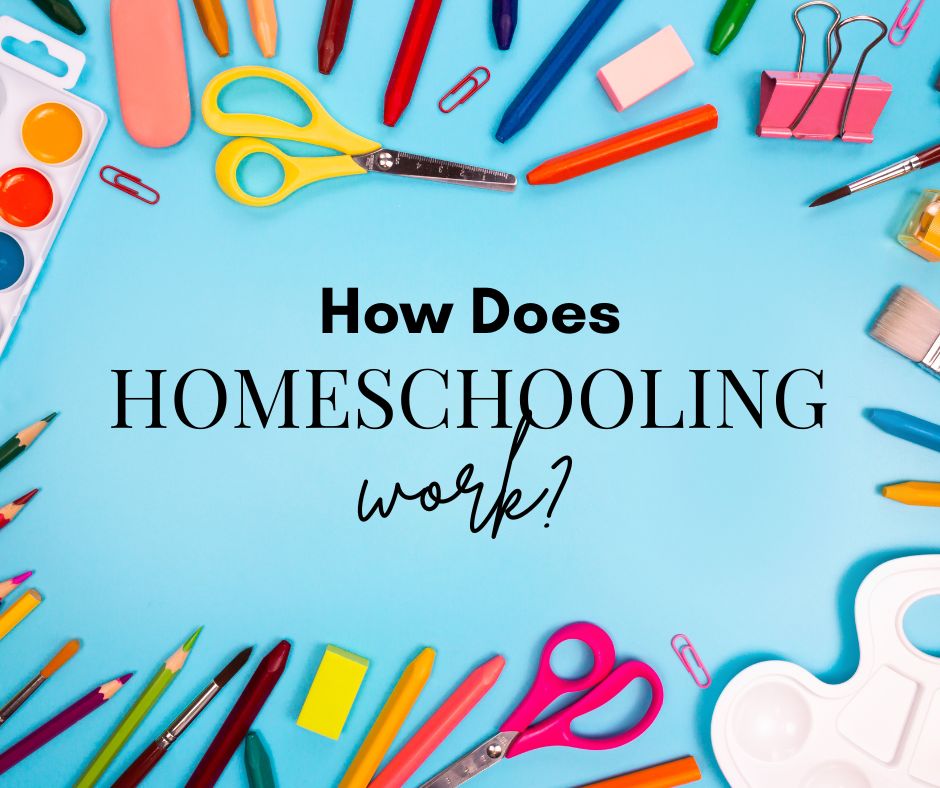There are many reasons parents choose to homeschool their children. Everyone’s reason for homeschooling is different and specific to their own circumstances. But, every parent has the right to choose homeschool as an option for their children. Read on for how to get started with homeschooling.




Check out these top non-religious reasons families choose homeschooling.
Why choose homeschooling?
The most common misconception about homeschooling is centered around WHO homeschools. People often believe those who choose the homeschool path are far-right, super religious parents wanting to shelter their children from the real world and indoctrinate them into religious extremism.
In the United States, about 60% of homeschoolers are right-wing Christian evangelicals…but there is a quickly growing sect of “secular” homeschoolers.
Secular homeschoolers are choosing the path of home education, not for religious reasons, but for academic, social, and safety reasons. Secular Homeschooling is approaching homeschool without any religious intent. Both religious and non-religious people identify as “Secular Homeschoolers” because they approach school separate from religion.
As of March 2022, approximately 25% of homeschool families identify as secular. This is a number that has continued to rise exponentially over the last several years, especially with the introduction of COVID19.
Public schools are currently in a lose/lose situation. As school boards start to forgo COVID precautions, they are seeing an exodus of families who are worried about the safety of their children. Alternatively, many school systems implementing distance learning options, are finding it difficult to implement a system that works. No matter which path a school system takes, whether to mandate COVID precautions or return to life as normal, there are groups of students leaving the system and entering the world of homeschooling.
As more people turn to homeschooling for reasons outside of religion, we will continue to see the secular homeschool community grow. With this growth will come more evidence-based curriculums, more inclusive activities offered through public programs, and more regulations. The regulations are inevitable as there will need to be more protections and programs put in place for children who are no longer attending traditional school. So, as a homeschooler it’s important to understand your rights and the laws surrounding homeschool.
Getting Started Homeschooling Step 1- Know The Homeschool Laws & Regulations in Your State
Although, homeschooling is considered a right in the United States, the rules governing how/what/when to teach are set at the state level. In order to remain in compliance with homeschool laws, you need to understand the regulations in place for your state. Even if your family identifies as “traveling homeschoolers”, “roadschoolers”, or “world schooling”, you need to follow the laws set forth in your home state (ie: where you file your taxes).
Find Your State Homeschool Laws here.
Getting Started Homeschooling Step 2- Research Learning Styles and Educational Approaches
When I started this journey into homeschooling I thought it was something I would NEVER do! We started homeschooling during the pandemic because distance learning was not working for my son. I had never considered homeschooling and didn’t think I would be very good at it. What I didn’t know at the time was there are MANY different ways to approach homeschooling.




I started off trying to recreate school at home and it was an utter failure.
This is a common mistake that new homeschoolers make. In an attempt to create a “sense of normal” for our kids, we try to bring the familiar aspects of school home. I set up a “homeschool room” where each child had a desk, they had cubbies, I covered the walls in “school” decor, we had a set schedule starting at 9am and ending at 3pm. It was too much!
After learning about the different homeschool education styles, I was able to try different things and find what worked for my family. Every family is going to be different, there is no “one size fits all” curriculum or strategy when it comes to homeschooling.
Getting Started Homeschooling Step 3- Connect with Other Homeschoolers




The most powerful tool for success in homeschooling is finding a community. Homeschooling your kids can feel lonely because you’re swimming against the stream. Society says the only way your kids can be successful in life is for them to attend traditional school. You’re going to encounter pushback from friends, family, and even complete strangers. The sad truth is, people judge homeschoolers harshly, and if you don’t find a tribe of fellow homeschoolers to connect with, your journey will be even harder.
As secular homeschoolers we face an even more difficult challenge of finding community. Even though 25% of homeschoolers identify as secular, it can be difficult to find fellow secular homeschoolers because most tend to blend in and lay low. Secular doesn’t necessarily mean non-religious, atheist, or agnostic; it just means that you’re approaching homeschooling in a purely academic sense and not using religious theology to guide your learning.
The goal in finding your tribe among the homeschool community is not to find people just like you with your same beliefs and teaching style. The goal should be to find others who are cheerleaders for your journey, inclusive of others, and open to learning with each other.
How to Find a Secular Homeschool Community
Getting Started Homeschooling Step 4- Making Time for Homeschool
Making time for homeschool is easier for some people than others. The cool thing about homeschooling is…you’re in charge and can pretty much set the terms as long as you follow your state guidelines. Most states don’t have set times that you’re required to homeschool.
Working parents often fear they can’t homeschool because of the time restraints of working full time. Depending on your kids ages and maturity level, there are many ways to make homeschool possible when you work full time. Since homeschool doesn’t take as much time as traditional school, students are able to progress faster and succeed in less time.
The amount of time spent homeschooling is different for everyone based on age, curriculum, homeschool approach used, maturity, etc. For younger children, homeschool consists mainly of play and reading. For older children, homeschool is focused on self-directed learning. For many homeschool families, the average homeschool day can take just 2-4 hours.
For many homeschool families, the average homeschool day can take just 2-4 hours.
It does help to have a set time for schooling, but it’s important to be realistic in your expectations. For my family, we do school in the morning. My kids naturally wake up between 8-9am, we have breakfast, and get started homeschooling. Typically we’re done with schoolwork by lunch at 12pm. Then we spend the afternoon playing outside, doing extra-curricular activities, and connecting with our homeschool community.
If you work full-time and have very limited free time then you’ll need to be strategic with your time. We have friends who do their schooling in the evening. The kids spend the first part of the day with their grandparents while the parents work. Then, when mom picks them up at 4pm, they start their “book” work, eat dinner, and are in bed around 9pm. For older kids who are self-guided they can complete their “book” work during the day.
Your homeschool day doesn’t need to match anyone else. Your goal is to figure out what works for your family and go from there.
Getting Started Homeschooling Step 5- Setting Up a Homeschool Area
A common misconception new homeschoolers have is that you need a designated “homeschool” area in your house. I see so many new homeschool parents posting in FB Groups asking to see others’ “homeschool rooms” or sharing an elaborate set-up they’ve created and asking for feedback. I get it, when we started homeschooling, I transformed the kids playroom into our homeschool classroom. And you know what? We used it for about 3 weeks and then started moving all around the house.




For us, having a designated spot for school was stagnant and caused restlessness. Now, I keep a stack of books under the coffee table in the living room, we have homeschool supplies on the kitchen table, experiment kits in the pantry, art supplies next to the patio door, the kids have books in their rooms, and we even have stuff in the car. We found that homeschooling is a lifestyle and shouldn’t be confined to one room.
We found that homeschooling is a lifestyle and shouldn’t be confined to one room.
Some people like a designated home for all things homeschooling…but that can be as simple as a bookcase. You don’t need an extra room with desks and maps and all the things…in fact, as you get further into your homeschool journey, you’ll find a system that works for your family…and it probably won’t consist of a “homeschool room”.
Homeschool Supplies – What You Actually Need and What to Skip
Getting Started Homeschooling Step 6- Choosing a Homeschool Curriculum
Choosing a homeschool curriculum is the most daunting task for any new homeschool family! There are so many choices when it comes to choosing a homeschool curriculum. First, you need to decide what style of homeschooling is going to work best for your family.
I started off with a classical approach to homeschooling and it didn’t work at all for my kids. But, our friends across the street use a classical curriculum and they love it. It truly depends on your kids’ learning styles and interests. The best advice I have for getting started with a curriculum is to stick with the basics and build from there.
The non-negotiables in our house are reading, writing, and math. I feel that as long as my kids are proficient in those three subjects then we can build out the rest through interest-based learning. Some homeschool parents prefer a more set curriculum and some parents prefer less. There is no perfect homeschool curriculum for everyone. The first year of homeschooling is going to be a lot of trial and error, you’ll have good days and bad days, but the key is to keep trying and you will find what works.
The non-negotiables in our house are reading, writing, and math.
For brand new homeschoolers I recommend Time4Learning as a starting point. It’s completely online and helps keep your kids on track while you get the hang of homeschooling. You can choose whether to have your kids do all of the subjects or you can choose 1 or 2 subjects…the choice is up to you. Then you’re able to review how they’re doing on their work and where they may need help.
The nice thing about Time4Learning is that you can adjust the grade level if your child needs something more or less challenging. Getting into the groove of homeschooling and finding what works for you can take some time. Many new homeschooling parents feel like they’re falling behind during those first few months; Time4Learning gives you the peace of mind that your child is doing something and staying “on-level” while you learn more about homeschooling and find your way.
Find the Right Curriculum for Your Homeschool Family
Getting Started Homeschooling Step 7- Be Open to Changes
The number 1 tip I hear from veteran homeschool parents is to be open to changes! Especially when it comes to curriculum and learning concepts. No two kids learn the same way…that’s probably one of the reasons you started this homeschool journey…to give your kids a customized education so they’ll succeed in life.
When we began our homeschool journey, I bought the whole kit and kaboodle of curriculums only to find out a month down the road that it wasn’t a good fit. After weeks of frustration and melt-downs about school I threw in the towel and opted for a different path. Since then we’ve changed our strategies and curriculums multiple times…and that’s okay!
Remember, homeschool is NOT traditional school at home. It’s ok to change midway through if there’s something you don’t like. It’s okay if you don’t finish the workbook you thought your kids would devour. As you continue along your homeschool journey, you’ll find that you pick and choose pieces out of different curriculums and resources to create a unique learning experience for your children.
Remember, homeschool is NOT traditional school at home.
Getting Started Homeschooling Step 8- Celebrate Successes
As homeschoolers it can be quite easy for us to become hyper-focused on the educational aspects of homeschool. Every homeschool parent I’ve ever met wonders if they’re doing enough. If you’re worried about doing enough, then I can guarantee you are…you love your kids and you want them to succeed…sometimes this fear overshadows the progress that is happening. That’s why it’s so important to take time and celebrate the successes!
If you don’t take time to celebrate the successes, I can guarantee you and your kids will get burnt out! Celebrating success doesn’t have to be elaborate, it can be a simple dance party in the middle of the day. It can be ice cream for dessert one night. It can be a family movie night. The important thing is to set a goal and celebrate when your child achieves that goal. This not only encourages them to dive into schooling, but it helps you see the progress being made.
Homeschooling is an amazing journey! There will be ups and downs. You’ll have days you want to march down to the public school and demand they take your kids. You’ll have beautiful days where your children are brilliant and amazing. Homeschooling is a journey and takes work…but it’s worth every single second!

